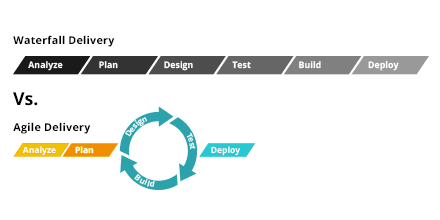Table of Content
To meet the competitive demands of the Digital Transformation era, enterprises are required to adopt a continuous delivery model where release cadences are measured in days, not quarters and quality is guaranteed. To get there, organizations need to apply agile methodologies.
However, unlike native Internet or software companies, enterprise IT needs more than a continuous development tool such as Jira or Jenkins to infuse their organizational DNA with agility.
What Is Enterprise Agile Delivery
Within the Enterprise, application delivery and testing activities must be undertaken in close partnership with business users and functional experts within the line of business. This requires more collaboration, constant planning, and transparency as well as a process-oriented approach to application lifecycle management.
Furthermore, backend enterprise applications do not exist in a vacuum – any potential change to the software landscape could have a significant downstream impact that far outweighs the benefit of the new functionality. Therefore, real-time visibility into project risk and quality are paramount.
Why Should You Care?
As an IT professional, have you been noticing the increasing rate of business-driven change requests in your organization? Are you confident that you can meet the demand for frequent, high-quality change? If your answer to the first question is yes and the second is no, you might like to consider Enterprise Agile Delivery.
Think continuous delivery is for Internet companies only? Think again. It does take more than some Agile development tools but with the right methodologies and designated platform, enterprise IT can be agile too. Modern ALM for the agile enterprise means Business and IT collaboration, automation and visibility.
For enterprises to realize the promise of agility and continuous delivery, they need to adopt the next generation of Application Lifecycle Management (ALM) tools. To learn more about what that entails, download our White Paper, Introducing Agility to Enterprise Applications.


